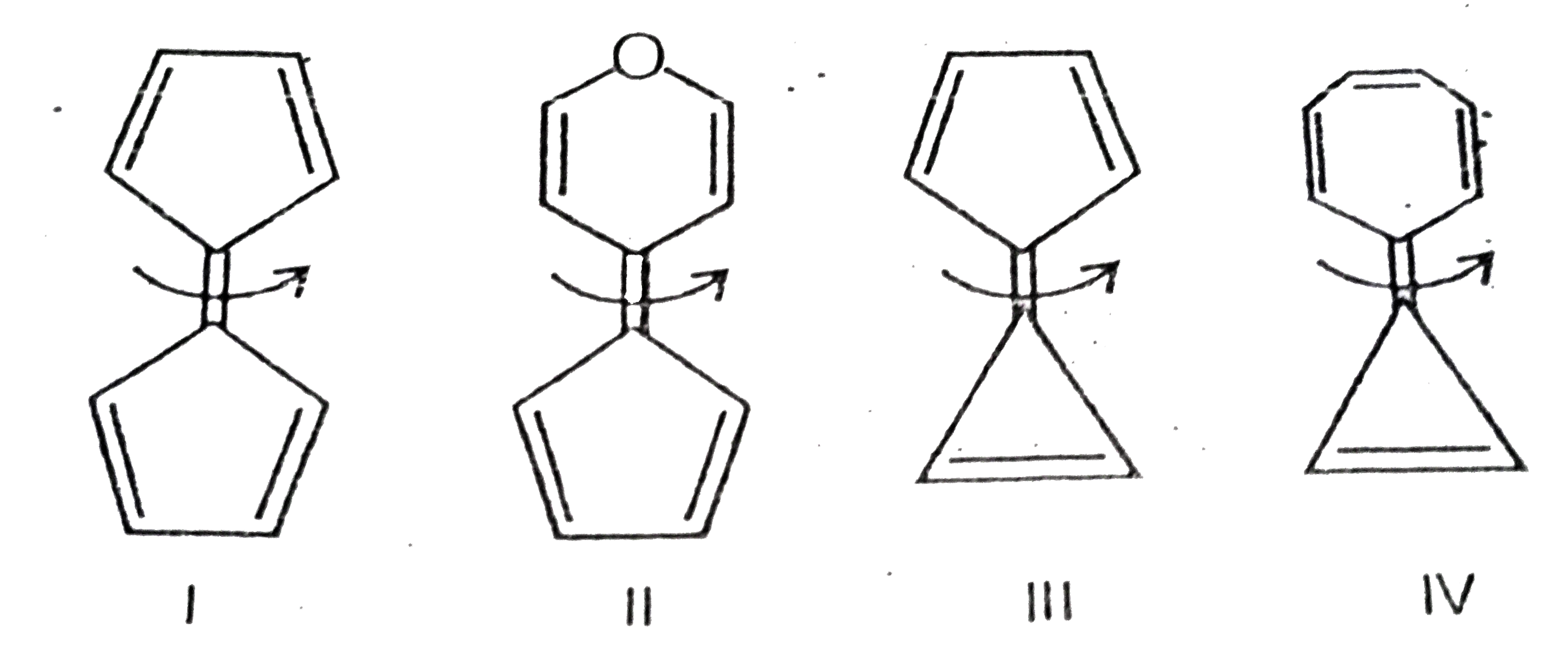Ordinarily the barrier to rotation about a carbon - carbon double bond is quite high but in compound P double bond between two rings was observed by NMR to have a rotational energy barrier of only about 20 cal/mol., showing that it has lot of single bond character.

The reason for this is
Double bond having partial triple bond character because of resonance
Double bond undergoes flipping
Double bond having very high single bond character because of aromaticity gained in both three and five membered rings.
+I effect of nC3H7 groups makes double bond having partial single bond character.
The correct Answer is:C
Step by step video & image solution for Ordinarily the barrier to rotation about a carbon - carbon double bond is quite high but in compound P double bond between two rings was observed by NMR to have a rotational energy barrier of only about 20 cal/mol., showing that it has lot of single bond character. The reason for this is by Chemistry experts to help you in doubts & scoring excellent marks in Class 12 exams.
Updated on:21/07/2023Similar Questions
Knowledge Check
The barrier for rotation about indicated bonds will be maximum in which of these compounds?
 AXBYCZDSame in all
AXBYCZDSame in allWhich of the following has the lowest barrier to rotation about the indicated bond ?
A B
B C
C D
D
Which is the correct order of bond energy of single, double and triple bonds between carbon atoms ?
AC−C>C=C>C≡CBC=C>C≡C>C−CCC≡C>C−C>C=CDC≡C>C=C>C−C
Which of the following will have the least hindered rotation about carbon-carbon bonds?
View SolutionAssertion:- Acrylic acid is unsaturated compound.
Reason:- One double bond between the carbon atoms is present
View SolutionConformations are different arrangements of atoms that are interconverted by rotation about single bond.
In eclipsed conformation, the C-H bond on-one carbon is directly aligned with C-H bond on the adjacent carbon.
In staggered conformation, the c H bond on one carbon biseçt, the H G H bond angle on adjacent carbon.
The angle that separates a bond on one atom from a bond on a adjacent atom is called a dihedral angle.
A staggered conformation with two larger groups 180∘ from each other is called anti. A staggered conformation with two larger group 60∘ from each other is called gauche.
Which of the following conformer of butane has minimum,energy?
View SolutionConformations are different arrangements of atoms that are interconverted by rotation about single bond.
In eclipsed conformation, the C-H bond on-one carbon is directly aligned with C-H bond on the adjacent carbon.
In staggered conformation, the c H bond on one carbon biseçt, the H G H bond angle on adjacent carbon.
The angle that separates a bond on one atom from a bond on a adjacent atom is called a dihedral angle.
A staggered conformation with two larger groups 180∘ from each other is called anti. A staggered conformation with two larger group 60∘ from each other is called gauche.
Identify the most stable conformer of 2-fluoro, ethanol among the following:
View SolutionConformations are different arrangements of atoms that are interconverted by rotation about single bond.
In eclipsed conformation, the C-H bond on-one carbon is directly aligned with C-H bond on the adjacent carbon.
In staggered conformation, the c H bond on one carbon biseçt, the H G H bond angle on adjacent carbon.
The angle that separates a bond on one atom from a bond on a adjacent atom is called a dihedral angle.
A staggered conformation with two larger groups 180∘ from each other is called anti. A staggered conformation with two larger group 60∘ from each other is called gauche.
Which of the following is gauche conformer?
View Solution


